Heading into last year’s summer break, Williams were a team in disarray, having scored one solitary point over the opening 10 Grands Prix. It would transpire to be the worst season in their illustrious history.
This year, however, they have been rejuvenated. Several new senior appointments have been followed by the squad’s first pole position in two years and a string of podiums, helping to lift them to fifth in the constructors’ championship. Speaking exclusively to Formula1.com, technical director Pat Symonds, who has led the sweeping changes since arriving last August, reveals some of the secrets behind the transformation…
Q: Looking back to when you arrived, were you worried about the state of the team? With just one point, were there any shoots of encouragement? Where did you look first?
Pat Symonds: When I really got into the team I saw a lot more than I had expected, and I was a lot more worried than I thought I was going to be - there were a lot more things to do than I realised. But what I could see is that there were some damn good people there, they just didn’t know quite what to do to make a winning team. There were some deficiencies, so I set about analysing what we had, where we needed to fill in - that’s a process that takes some time. I was quite lucky, I managed to get a number of people in before the season started, but we didn’t get everything in place and I suppose the last bit of ‘Phase 1’ was getting Rob Smedley, who we couldn’t get before the season started. But I also saw a lot of things in the processes that were being applied that just weren’t effective. There was an air of panic, which was something I attacked. I established what was needed and started putting it in place; looked at the processes; and then tried to focus people on performance. We didn’t have that: each department was doing it individually but everyone was in silos and there was very little communication.
Q: Back then, could you envisage this sort of jump forwards?
PS: No. I obviously knew where I wanted to get the team to, and I still know where I want to get to - and that is a long way further ahead from where we are now. But the initial progress is much better than I had expected. It’s never one person: what it shows is that there was some quality there, it just needed direction as to how to turn that quality into performance. There were other fortunate things as well, not least of which was the Mercedes contract - there was nothing wrong with the Renault engine, it won world championships last year while Williams finished ninth, so it wasn’t just about that. But I was very pleased that we had the Mercedes contract. There is no doubt it is the best power unit in Formula One at the moment and I always felt it would be, and it has helped in the renaissance without a doubt.
Q: How advanced were the team’s 2014 plans before you arrived?
PS: The basic architecture was done. We changed a few things as soon as I arrived… the monocoque was completely laid out, a lot of the engine was too, but we made changes on the transmission and rear suspension, and then just concentrated on aerodynamics because there was only a basis laid out. That was where I spent most of my time in the first few months. I felt the design group were very functional, were very good indeed, so really we wanted to concentrate on aero - as always performance comes from there. The race engineering side needed strengthening so we got people in, so there wasn’t much going on in that area until the new people started.
Q: Was there a key area or philosophy you were able to implement or bring to Williams?
PS: You have to treat it holistically - you cannot put all your effort into one area and leave the rest, and equally you can’t develop one part of the car and expect the rest to work with it. It’s very easy to get a local minima, where you try something and find it isn’t as good, so then you go somewhere else to try something. What you have to do sometimes is have a bit of a leap of faith: so you say ‘okay that isn’t as good, but what it has done is allowed me to now work over here, and when I make that bit better the whole package will move up’. That is one of the hardest things to do, particularly with the aero restrictions we have these days. You can’t just work 24 hours a day trying to do everything; you sometimes have to accept that, while your result today might be slightly worse than yesterday, in a month’s time you will be better off.
There was a bit of an air of panic [when Symonds arrived]: the car was not good, and everyone was blaming aerodynamics - which was partly true - but they’d also sort of given up on other areas which was a shame because they should have done better. The pressure then was on the aero guys - a sort of ‘here’s a new front wing, oh that didn’t work, here’s another’. So we calmed that, thought our way through it. I hope I took away the blame culture and allowed people to innovate a bit.
Q: Did the fact that 2013 was so miserable help direct your focus onto this year’s car? Did you see 2014 purely as an opportunity?
PS: Yes, I did. Now that can be quite a glib answer, but the fact is that an awful lot of the performance of last year’s cars came from the blown diffuser. It wasn’t everything, and the basic aerodynamics of the FW35 were pretty poor anyway, but the blown diffuser was a disaster, so elimination of that definitely made my job easier. If we had these power units but still had blown diffusers we would still be struggling a bit, although I hope we would have got on top of it by now. But I looked at 2013 and knew there wasn’t a quick fix. We had no chance of catching Sauber in front of us, and we knew that for someone to overtake us it would be a freak result, so to me the concentration was always on 2014.
Q: Can you talk us more through ‘Phase 1’, and how that contributed to Williams’ revival?
PS: I guess it started before my time with making Mike O’Driscoll as CEO, Claire as deputy team principal, and that sparked the desire for change. I’m not convinced it existed before: there was a feeling things would get better. Mike is a very impressive guy and he knew perfectly well that we needed to get on and change things. Phase 1 was to re-establish the performance side, and to some extent the commercial side of the team. Phase 2 is to analyse where we are and build on it. The way I always think of things is not to look at next year, but to think two or three years ahead and then look at what steps are needed to get there. The further phases probably aren’t quite so dramatic, and yet they are fundamental in others - but I’m not about to reveal them all, because that’s the intellectual property (IP) in racing. The IP is not the in design of our front wing endplate, you can take a photo of that. The IP is the way we think, the way we operate, the way we do things.
Q: With all the changes that have been made, where would you place Williams in the current pecking order?
PS: Arguably we have the third-best car at the moment. It is very close this year - no one will say anything other than Mercedes is the best car, in my opinion Red Bull are second, and then you have Ferrari, Force India, Williams and McLaren. That is quite a tight bunch - and I hesitated with McLaren because if they didn’t have that haul of points from Australia they wouldn’t really be in the hunt. What makes it difficult this year is that 43 points are taken by Mercedes at pretty much every weekend, which means the rest of us are fighting for a lot less. The difference between finishing third and sixth overall might be quite small, and might well be determined by a good race in Abu Dhabi. So it is not the obvious of where we are based only on the championship - if we are the third-best team, we ought to finish third in the championship, but in 2005 we [Renault, where Symonds was executive director of engineering at the time] won the championship with Fernando Alonso when McLaren’s car was better than ours. We were a better team though and we won the championship by our racing.
Q: Given how tight it is, has there been any frustration about missed opportunities, particularly at the start of the season?
PS: Yes, absolutely. It’s life; what can I do about it? I don’t believe up until Austria that we performed or achieved as we should have, for all sorts of reasons. But I’m not really interested in ‘ifs’ and ‘buts’; I can’t go to Canada and move Perez out the way. I have been in this business now for 38 years, and if I worried about those things, I’d be dead wouldn’t I? What I care about is that we are better than our position shows.
Q: As well as those missed opportunities, you’ve had circuits where you haven’t performed that strongly - something McLaren’s Eric Boullier alluded to when he said your Austrian upturn was potentially track specific. Is that something you agree with?
PS: There is an element of it - always has been, always will be. Our objective is to design a car that works equally well on all 19 circuits, but none of us achieve that, not even Mercedes. So there is always an element of that. But I do think that is a bit of wishful thinking from Eric as well. Don’t get me wrong, I do recognise the differences for us at places like Austria, but I still believe we have the third-quickest car, and if we use it and develop it properly we will be third quickest at most circuits.
Q: Another change was the arrival of Felipe Massa from Ferrari? Did you know just what sort of driver you were getting with the Brazilian?
PS: Not exactly. I didn’t know him very well, but I thought he was an important part in the rebuilding and rebranding of Williams, and an excellent choice - I was very pleased we had him. But when I got to know him I was so pleased - he's such a personable guy, such a team player, and he’s quick. Of all the years I’ve been in F1, of all the great drivers I’ve worked with, I think I’m lucky this year to have two guys that are right up there, who get on well, who approach their job with intelligence and diligence, who are both very quick and both understand what we are trying to do as a team. They are very good at driving the team together - that is probably the key reason I am so happy. The team is undergoing change and the drivers are so much part of that, it is helping us no end.
Q: Do you have any defined goals for the rest of the year?
PS: I don’t have goals in the numerical sense: no ‘one finish here, this many points’ etc. What I want, particularly this year, is for this to be a team that people respect. So I want us to be continually improving; I want everything we do to the car to make it faster - which sounds obvious but doesn’t always happen. I’ve stopped the sort of ‘upgrade this at this race, that at that race’. We have a continuous development programme, and as soon as things are ready we get them on the car. Pretty much everything we have put on has worked this year with maybe one exception, where we were trying to push the boundaries and maybe went too far - but we recognised that straight away. I think the team is at least as good as it was at race one and arguably better, so that shows our development process is at least as good as everyone else - if not better. Ultimately I want us to gain confidence so we move forward next year. If we do all those things, then we will get a respectable finishing position in the championship - that isn’t the target, that is the result of doing your job properly.
Next Up
Related Articles
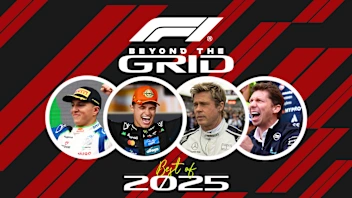 Beyond The GridThe best of 2025, from Norris’ evolution to Brad Pitt’s ‘need for speed’
Beyond The GridThe best of 2025, from Norris’ evolution to Brad Pitt’s ‘need for speed’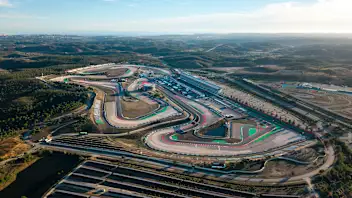 Formula 1 to return to Portugal in 2027 and 2028
Formula 1 to return to Portugal in 2027 and 2028 F1 AcademyHaas name Countryman as 2026 F1 ACADEMY driver
F1 AcademyHaas name Countryman as 2026 F1 ACADEMY driver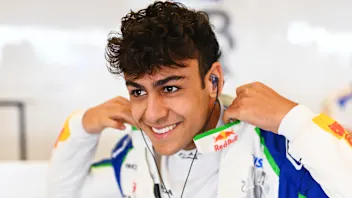 Lindblad's car number confirmed for rookie season
Lindblad's car number confirmed for rookie season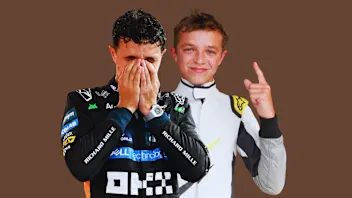 ExclusiveHow Norris made his school teachers ‘enormously proud’
ExclusiveHow Norris made his school teachers ‘enormously proud’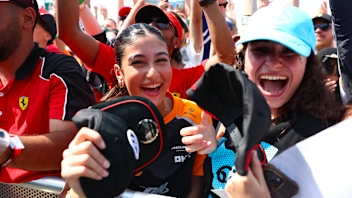 Formula 1’s record-breaking 2025 season in numbers
Formula 1’s record-breaking 2025 season in numbers